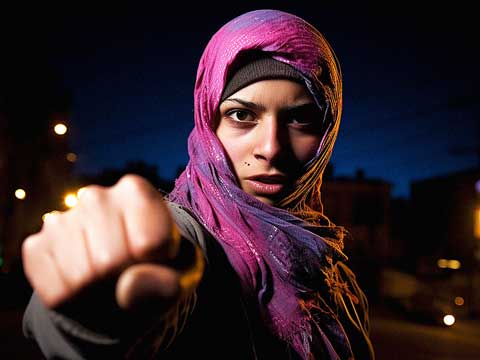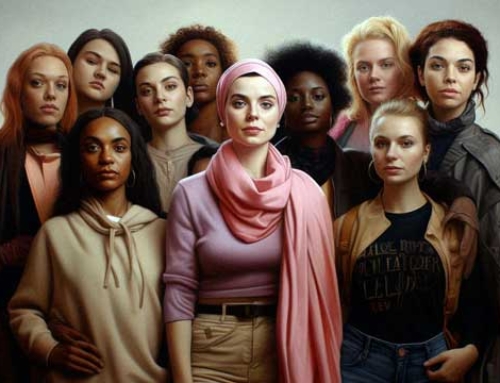Women’s rights have been a crucial issue throughout history, and the Middle East is no exception. This region is renowned for its cultural and religious diversity, which has influenced women’s rights and status. In this article, we explore the history and evolution of women’s rights in the Middle East, and how they have developed over time.
Women’s rights in the Middle East: a historical perspective
The history of women’s rights in the Middle East is complex and varied. In many of the region’s ancient civilizations, women enjoyed significant rights and played important roles in society. Think, for example, of ancient Egypt, where pharaohs were women, or Mesopotamia, where women enjoyed certain legal and economic rights.
Over time, however, cultural and religious factors began to play a more significant role in women’s place in society. In some cases, women’s rights were limited, and rigid social norms and restrictions were imposed on them. This led to a time when, in many parts of the Middle East, women were losing their freedom and rights.
The influence of cultural and religious factors
The influence of cultural and religious factors on women’s rights in the Middle East is a complex and all-encompassing subject that should not be underestimated. Throughout history, different cultures and religions have held differing views on the role of women in society. Unfortunately, certain interpretations of religious texts and traditions have contributed to establishing a patriarchal society in which women are subordinate to men.
Let’s explore a few examples.
- Islamic traditions: In some Muslim countries, traditional views on the role of women have led to restrictions and unequal treatment. For example, certain interpretations of Sharia law have restricted women’s access to education, employment and political participation. This has contributed to an unbalanced situation where women are often deprived of their individual rights and freedoms.
- Christian traditions: Within various Christian communities, there are also cultural and religious factors that have influenced the rights and position of women. Historically, certain interpretations of biblical texts have considered women to be inferior to men, thus contributing to gender inequality. Although many Christian communities insist on equality between men and women, in some cases restrictions remain.
- Jewish traditions: in the Jewish religion, too, there are varying opinions and interpretations concerning the role of women. One example, which originated in Israel, is the concept of the Jewish religious legal system known as Halacha. Although Halacha insists on equality between men and women, specific prescriptions in certain aspects of religious life restrict women. For example, within ultra-Orthodox communities, a strict separation between men and women is enforced in many religious and secular activities.
It is important to note that these examples are not representative of the full cultural and religious diversity of the region. There are also progressive voices and reform movements within every religion advocating equal rights for women. Moreover, women’s rights movements in the Middle East have fought against these restrictions and contributed to positive change and women’s emancipation.
Women’s rights movements
There are various women’s rights movements in the Middle East that have fought hard for equality and justice. These movements have transformed women’s lives and amplified their voices, even when it was difficult. I’d like to take you on a journey through some of these inspiring movements:
- The Iranian Women’s Movement. These women are a powerful example of determination and courage. In Iran, women have united in revolt against discriminatory laws and social restrictions. They are fighting tirelessly for equal rights, the freedom to make their own choices and protection from violence. This movement shows the world just how powerful and determined Iranian women are.
- Then there’s the National Association of Tunisian Women. These women have conquered a strong position in the fight for gender equality. They have fought for equal rights, educational opportunities and reproductive rights. They have encouraged women to make their voices heard and have greatly contributed to the advancement of women’s rights in the region.
- And in Lebanon, women have played an important role in the fight against oppression and inequality. They united in the Lebanese Women’s Movement and fought for equal opportunities, political participation and protection from violence. They truly encouraged women to fight for their rights and greatly contributed to strengthening women’s place in society.
- Within the Orthodox Jewish community in Israel, the “Women of the Wall” movement has been a powerful voice in the fight for women’s rights and equality. This inspiring movement has fought for the right of women to pray freely at the Wailing Wall in Jerusalem, a holy site for Judaism. Previously, women faced restrictions and discrimination when praying at the Wailing Wall, where they were forced to pray in separate areas and restricted in their expression of spiritual devotion. Women of the Wall courageously fought for the recognition of women’s right to pray on an equal footing with men at the Wailing Wall, without restrictions or discrimination. This movement has faced many challenges, with confrontation and opposition from conservative forces committed to traditional gender roles and interpretations of religious laws. Nevertheless, the determination and perseverance of Women of the Wall led to change. They have created a growing awareness of gender equality and the need for inclusion and respect for women within the Orthodox Jewish community.
These women’s rights movements have truly left their mark on the Middle East. They have shown what is possible when you have courage and determination in your quest for equality and justice for women. Not only did they bring about change, they also gave hope and inspiration to women all over the world.
Changes in the Modern Era
In recent decades, changes have taken place in the field of women’s rights in the Middle East. Countries have passed laws to combat discrimination against women and improve their position in society. Women now have greater access to education and can participate more actively in the workplace and in politics.
Although progress has been made, challenges remain. Gender inequality still exists, and certain cultural and religious practices still limit women’s rights. It is important to address these challenges and to continue working towards equal rights and opportunities for women in the Middle East.
Challenges and prospects
The challenges facing women’s rights in the Middle East are complex and varied. Social norms, cultural traditions and legal restrictions can impede progress. In addition, there are regional and political factors that influence the position of women.
However, there are also positive prospects and developments. More and more people recognize the importance of gender equality and aspire to change. Through awareness-raising, education and cooperation, further steps can be taken to improve women’s rights in the Middle East.
Women’s rights in the Middle East: A new chapter of hope and progress
Let’s continue to build a world in which women are not limited by their gender, but are valued and honored for their strength, wisdom and courage. Together, we can create a future where women’s voices are heard everywhere, where equality is a given, and where women have the freedom to choose their own path.
Yes, there’s still work to be done, but I’m optimistic. I believe we can create a world where the history of women’s rights in the Middle East is marked by triumph and victory. Let’s stand up together, join forces and build a future where all women can shine and realize their dreams.







